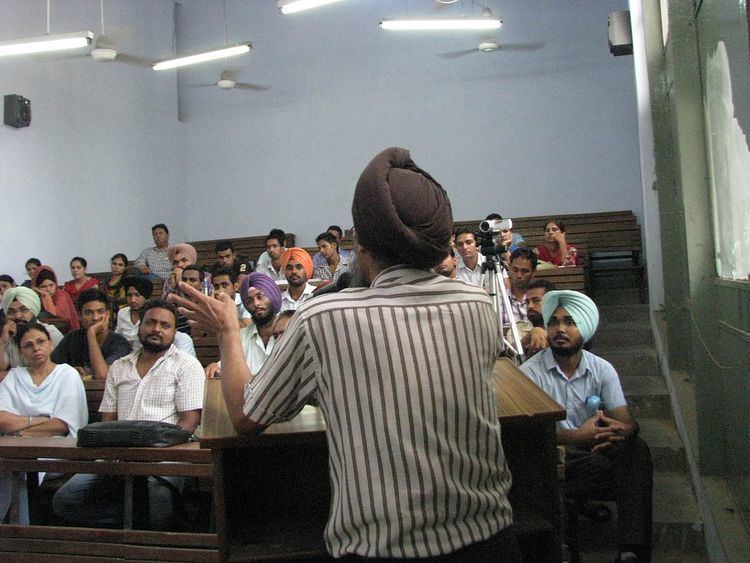 | ||
Punjab has a long history of education.
Contents
Primary and secondary education
The Indian government lays emphasis on the primary education up to the age of fourteen years, referred to as elementary education in India. The Indian government has also banned child labour in order to ensure that the children do not enter unsafe working conditions. However, both free education and the ban on child labour are difficult to enforce due to economic disparity and social conditions. 80% of all recognized schools at the elementary stage are government run or supported, making it the largest provider of education in the country.
However, due to a shortage of resources and lack of political will, this system suffers from massive gaps including high pupil to teacher ratios, shortage of infrastructure and poor levels of teacher training. Figures released by the Indian government in 2011 show that there were 5,816,673 elementary school teachers in India. As of March 2012 there were 2,127,000 secondary school teachers in India. Education has also been made free for children for 6 to 14 years of age or up to class VIII under the Right of Children to Free and Compulsory Education Act 2009.
There have been several efforts to enhance quality made by the government. The District Education Revitalization Programme (DERP) was launched in 1994 with an aim to universalize primary education in India by reforming and vitalizing the existing primary education system. 85% of the DERP was funded by the central government and the remaining 15 percent was funded by the states. The DERP, which had opened 160000 new schools including 84000 alternative education schools delivering alternative education to approximately 3.5 million children, was also supported by UNICEF and other international programmes.
This primary education scheme has also shown a high Gross Enrollment Ratio of 93–95% for the last three years in some states. Significant improvement in staffing and enrollment of girls has also been made as a part of this scheme. The current scheme for universalization of Education for All is the Sarva Shiksha Abhiyan which is one of the largest education initiatives in the world. Enrollment has been enhanced, but the levels of quality remain low.
Secondary Education
The National Policy on Education (NPE), 1986, has provided for environment awareness, science and technology education, and introduction of traditional elements such as Yoga into the Indian secondary school system. Secondary education covers children aged 14 to 18, 88.5 million children according to the Census, 2001.
A significant feature of India's secondary school system is the emphasis on inclusion of the disadvantaged sections of the society. Professionals from established institutes are often called to support in vocational training. Another feature of India's secondary school system is its emphasis on profession based vocational training to help students attain skills for finding a vocation of his/her choosing. A significant new feature has been the extension of SSA to secondary education in the form of the Rashtriya Madhyamik Shiksha Abhiyan.
A special Integrated Education for Disabled Children (IEDC) programme was started in 1974 with a focus on primary education. but which was converted into Inclusive Education at Secondary Stage Another notable special programme, the Kendriya Vidyalaya project, was started for the employees of the central government of India, who are distributed throughout the country. The government started the Kendriya Vidyalaya project in 1965 to provide uniform education in institutions following the same syllabus at the same pace regardless of the location to which the employee's family has been transferred.
Tertiary education
Punjab is served by many public institutes of higher education (listed below). All the major arts, humanities, science, engineering, law, medicine, veterinary science, and business courses are offered, leading to first degrees as well as postgraduate awards. Advanced research is conducted in all major areas of excellence. Punjab Agricultural University is one of the world's leading authorities in agriculture. It was instrumental and played vital role in Punjab's Green Revolution in the 1960s-70s.
Central
State
Deemed
Private
Autonomous colleges in Punjab
Many colleges of Punjab have been granted autonomous status by UGC.
Reputed colleges (Technical /Professional)
Other Institutes of Repute (General)
Medical Colleges
As of 2015, there are more than 920 MBBS and 1,070 BDS seats across Punjab.
